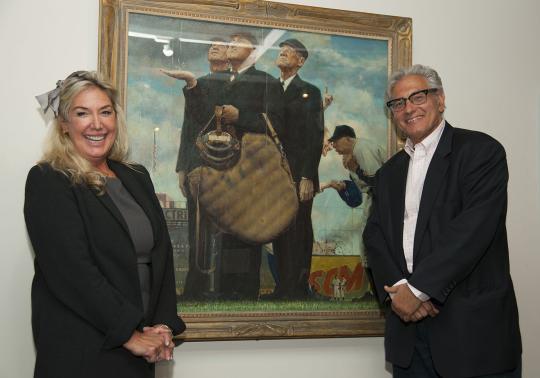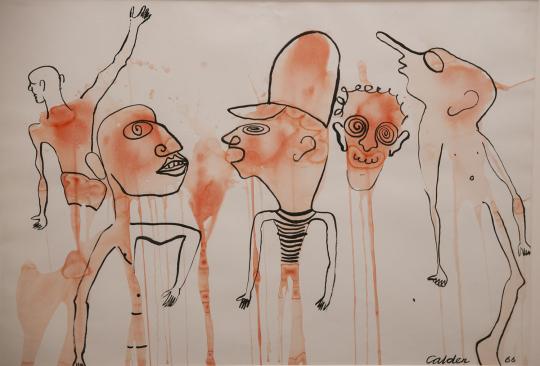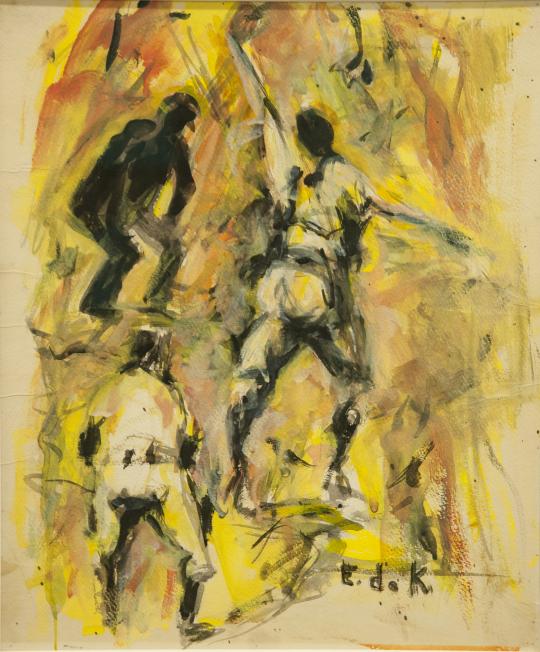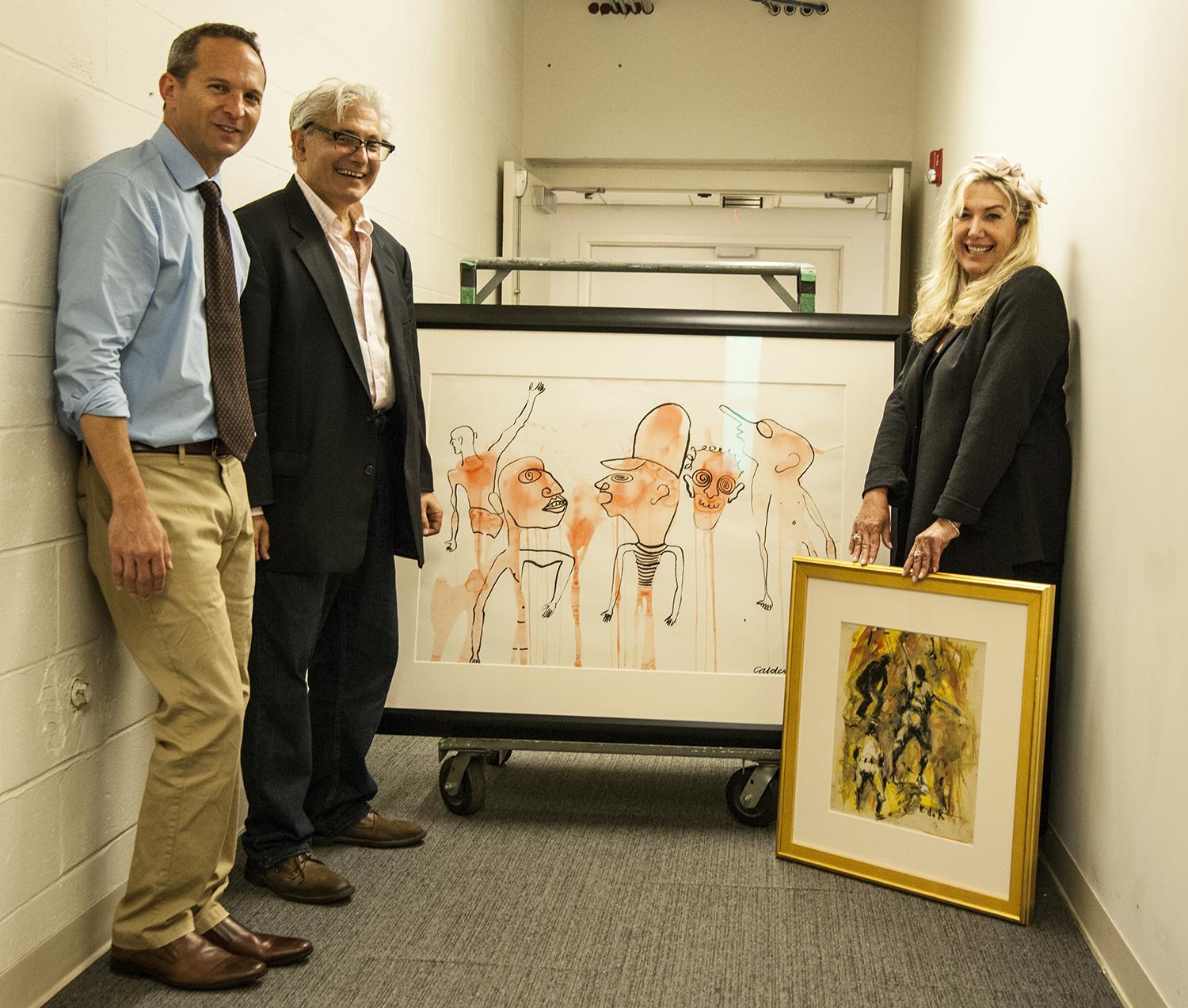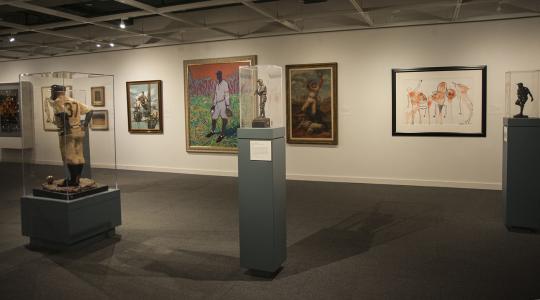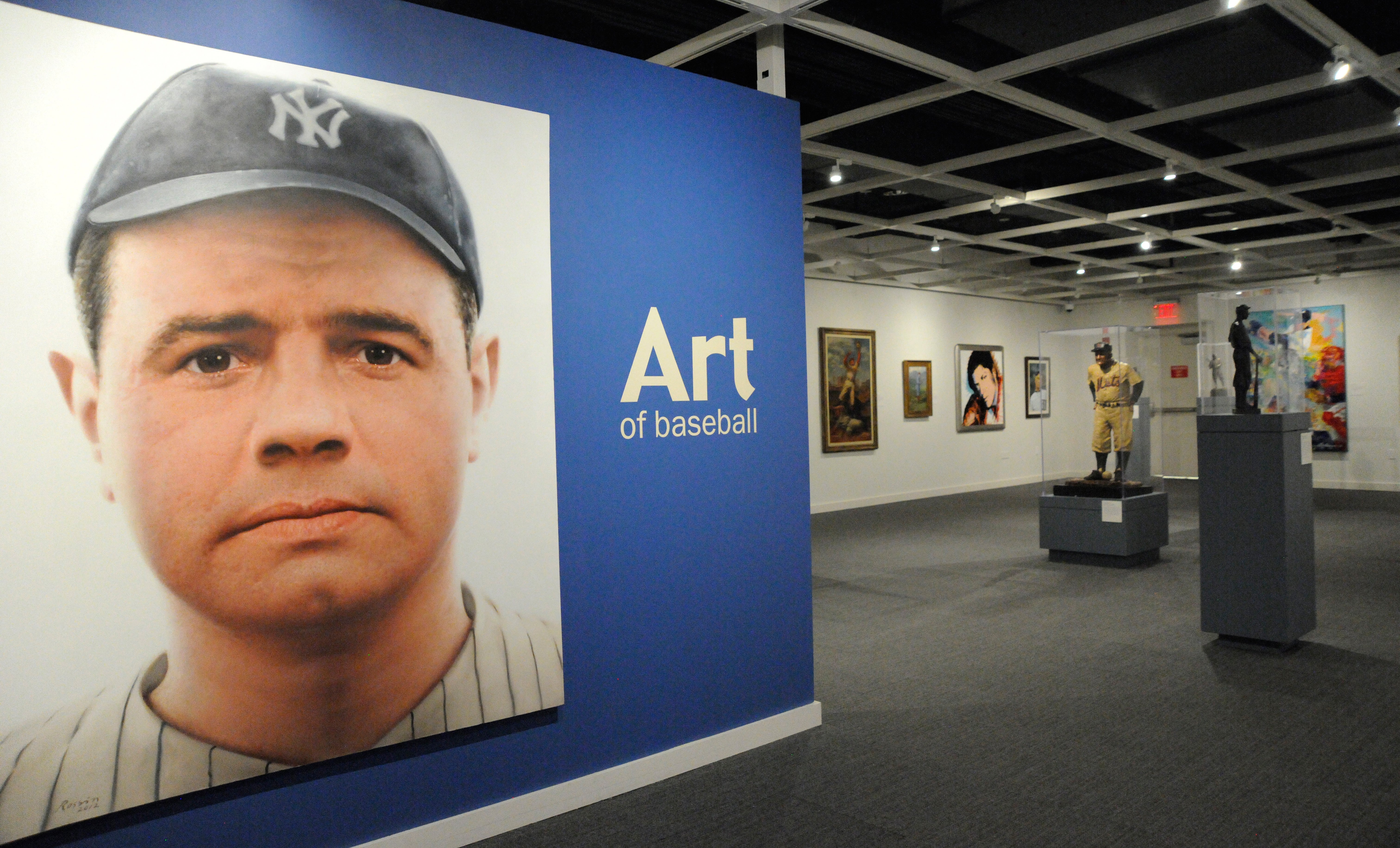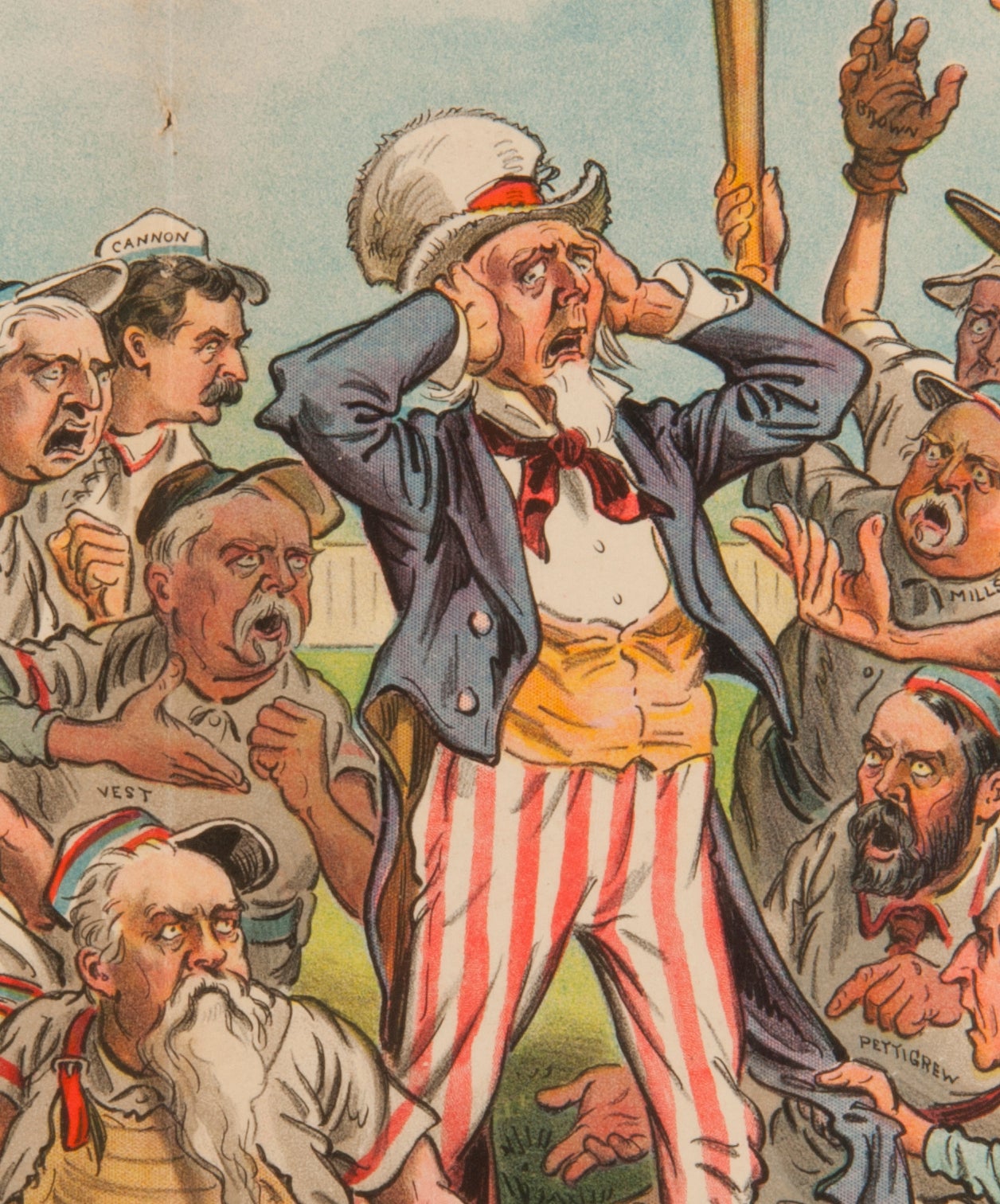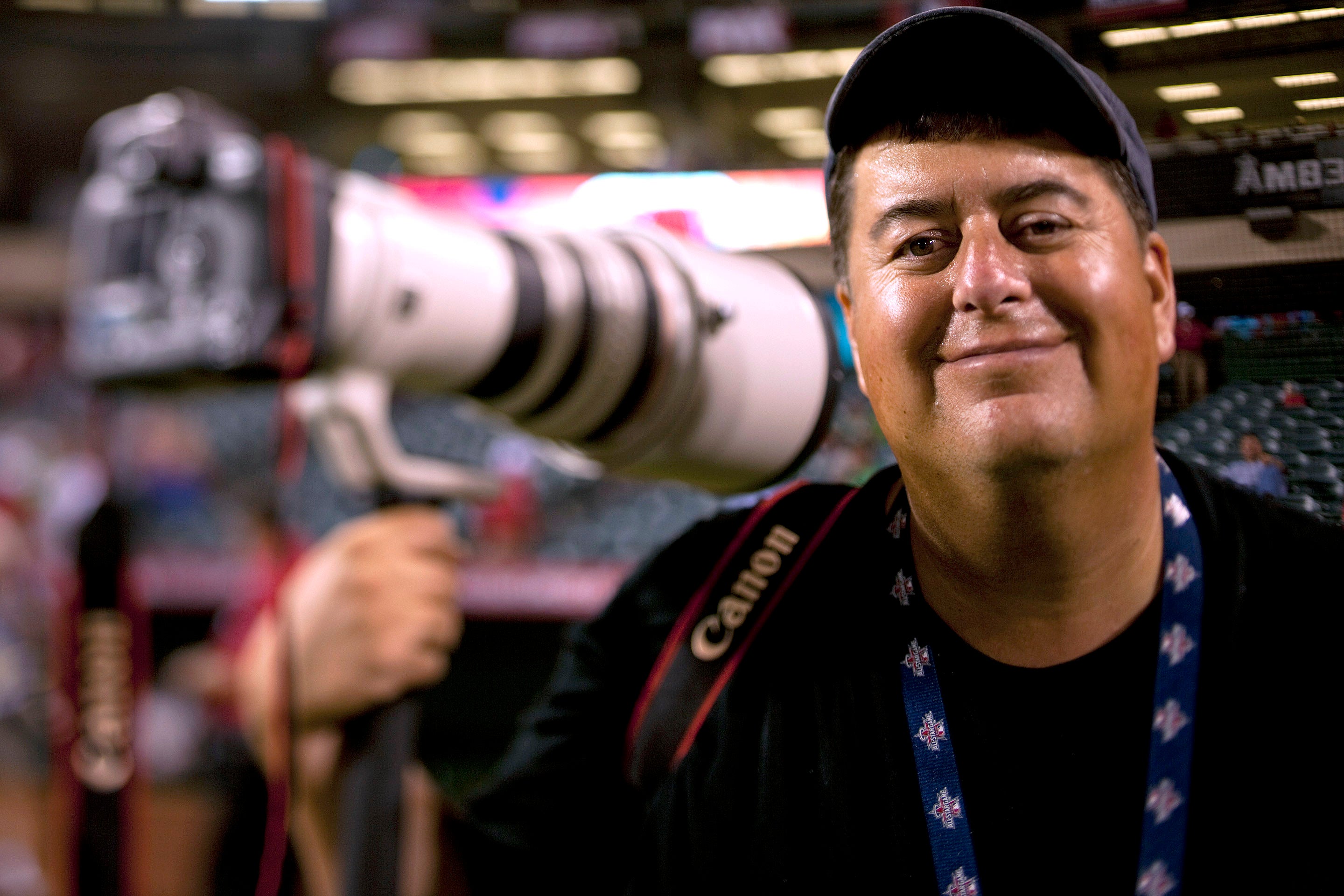- Home
- Our Stories
- Museum showcases art of baseball
Museum showcases art of baseball
Most baseball fans associate the Hall of Fame with prodigious feats, historical artifacts and iconic players throughout history.
A former Yankees ball-boy from Long Island, Rick Friedman, is hoping to help change that perception.
Friedman will generously provide the National Baseball Hall of Fame and Museum with two pieces by world-renowned artists – Alexander Calder's "Baseball," and Elaine de Kooning's "The Baseball Catch” – each capturing the artist’s passion for the game. Starting August 4, the pieces will temporarily be on display.
“There’s an opportunity [here] because a lot of the art world loves baseball, and they painted baseball – so these pieces exist all over the world, and where better to showcase them than here?” Friedman said.
Calder was an artist and a sculptor known for his mobiles, stabiles and wire figures. His work has been displayed in museums worldwide, as well as in nationally-renowned buildings like Lincoln Center in New York City. Early in his career he was a sports illustrator for the National Police Gazette, as well as a baseball fan, always fascinated by movement and mechanics. “Baseball,” created in 1966, depicts the racial integration of the game, by showing black and white players together.
De Kooning was one of the pioneers of the early 1950's Abstract Expressionist movement in America. Her work was featured in some of the breakthrough New York City art gallery shows of that era, notably her first solo exhibition in 1952, at the Stable Gallery in New York. One of the few women of her time to receive acclaim, she had a more extensive sports background, creating numerous pieces that depicted baseball and basketball players. An avid baseball fan who was fascinated by their “stances”, she traveled with the New York Yankees and Baltimore Orioles in 1953 and 1954, and years later created a show called “Hoops and Homers,” entirely dedicated to the two sports. Her watercolor “The Baseball Catch,” depicts a catcher reaching for a ball while an umpire looks on in the background.
While these two pieces will be impressive additions to the Hall of Fame’s collection, Friedman sees them – and art, in general – as a way to preserve baseball’s greatest moments.
“I think that art captures a snapshot in a specific life. Everything here is a specific picture. And for me, if you are going to capture something, what better than capturing a specific baseball moment, one that’s really memorable,” Rick said, motioning toward “Casey at the Bat” by Robert Heindel in the Museum’s Frank and Peggy Steele Art Gallery. “I mean, look at that pitch right there and the swing – the pitch is going right in that sack, and it’s at the precise moment – that’s powerful.”
De Kooning was an avid baseball fan who was fascinated by their “stances,” and traveled with the New York Yankees and Baltimore Orioles in 1953 and 1954. This is her painting, "The Baseball Catch," now on display in the Frank and Peggy Steele Art Gallery at the Baseball Hall of Fame. (Milo Stewart Jr. / National Baseball Hall of Fame)
John Odell, the Museum’s curator of history and research, agreed with Friedman, emphasizing the creativity and uniqueness in how these artists express their love for the National Pastime.
“It’s a different kind of passion for the game,” Odell said. “There are a lot of people that love the game. But for others, their passion for the game inspires them to create something about baseball.”
Cindy Lou Wakefield, an educator in the Southampton school district for nearly 30 years, sees the Frank and Peggy Steele Art Gallery as a cultural and educational center for families.
“There are children, there are families coming through,” Wakefield said. “There is so much education in this room that kids can learn from – it just brings a whole other dimension to this great place.”
Alex Coffey is the communications specialist at the National Baseball Hall of Fame

